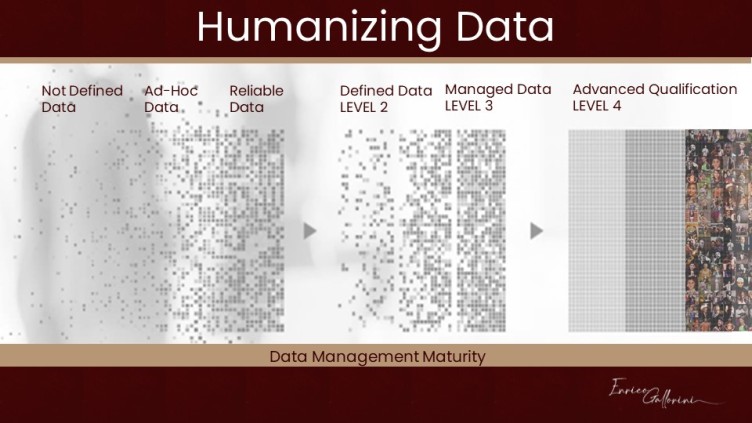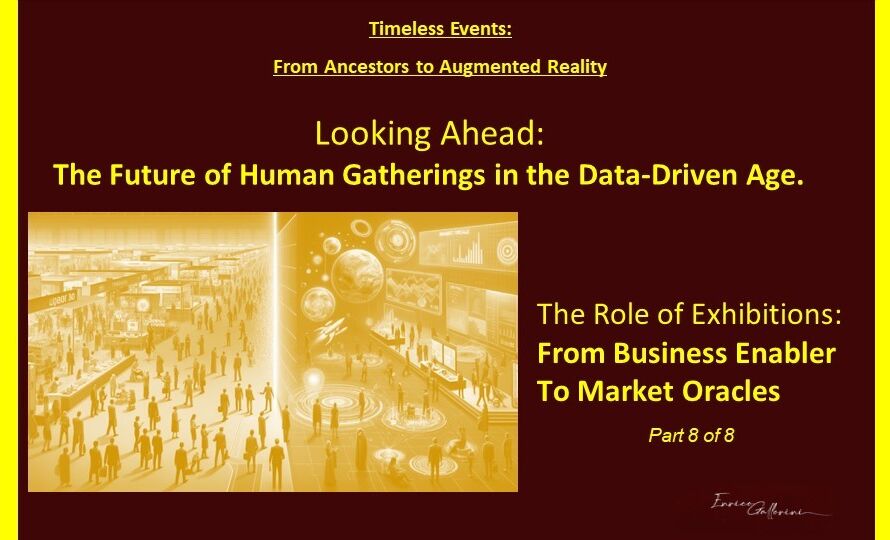If there was one positive aspect to the period of COVID-19, it was its collective impact on the need for community. Suddenly, everyone could understand the indispensable need for communities linked to specific supply chains to meet and be together. These meetings are what we commonly know as exhibitions.
Unfortunately, COVID-19 fully trampled the exposition and events industry which, as a result, lost many competencies, internally for companies or among its suppliers. There is now a need to refocus on a long-term strategic vision.
What is clear is the fact that the post-pandemic winning formula and main KPIs will be different from the pre-pandemic one.
Post-pandemic, event organizers focus 100% of their attention on the “delivery” of the show. Exhibitions have shown an incredible capacity for resilience, but more than ever, it is necessary to rethink the metrics and Key Performance Indicators in a more structured way. They will become the foundations on which the industry will reaffirm its central role in supply chains.
By working professionally with data, collecting it, analyzing it, studying it, and communicating with our clients regarding the insights gathered from this information, GRS has a privileged perspective:
Namely:
· It is necessary to know your client. Once you establish the real clients of these events and how to place them at the center of strategy, you can create a sustainable and evolved business system.
· We must escape the “clients = revenues” and the “clients = exhibitors” trap. We must completely rethink the role of all beneficiaries, whether they be exhibitors or visitors, but with particular attention to the part of Visitors.
If we are to follow a client-centric approach, we must rethink exhibitions from organizational culture to strategic orientation. Internationally, the drivers steering expositions towards considerable success share a common characteristic:
They have a new approach toward the client-visitor. They have moved away from the sole practice of market research to that of a co-creator. In these successful models, the visitor becomes an active interlocutor of the organizers, a support to be employed. The key word is CO-CREATION.
Here the attention shifts from pure “data” to deep diving into client experiences that can transform information into a real strategy.
The shift is achieved by creating a client engagement path favored by listening, a delicate and complicated art.
Listening to build strategic trajectories requires an almost philosophical/psychological skill, often lacking in the industry.
But we listen because it is precisely the clients’ needs and experiences that will guide the needs of the expo and, consequently, those of the supply chain of reference. Data is a hot commodity, but really, what matters is understanding what to do with that data. Gathering and monitoring KPIs are what translate to event success.
But how do you prioritize the visitor when burdened by so many other factors?
Successful organizers rely on experts in consultancy, support, and research that can “externally and impartially” aid the listening path strategically.
The organizer needs to leverage the potential of data and technology through a more profound analysis of this information, leaving behind the pure quantitative methodology and moving on to a more complex, refined, and articulated “qualitative” methodology.
This means rethinking one’s understanding of visitor data and going beyond the demographic, commodity-related, economic data, etc.
Previously the focus has been on the exhibitors expanding their numbers, increasing their investment, and broadening the spectrum. This perspective has led to the creation of sophisticated exhibitor study, analysis, and profiling systems. Today, however, the approach has shifted to visitors.
The exhibition industry must increasingly equip itself with “clever” tools to test, experiment, and optimize its business path.
Thanks to new digital interactions, lead retrieval, matchmaking tools, etc., the set of exchange and sharing moments with visitors can lead to the implementation of new products, new formats, and new solutions to the needs of its visitors.
Where to begin?
It is necessary to create control dashboards for top management that, in addition to providing directions and the KPIs of reference, can dialogue and “narrate” the needs of visitors, which then become the new coordinates around which the event must turn.
In the event organizer’s new control radar, there must be many further reference KPIs, in addition to economic and financial ones.
The new KPIs aim to use listening skills to discover how many newsletters are opened, how many websites are used, and which apps are downloaded.
All the data relating to one’s visitors’ registration elements will become increasingly indispensable. KPIs regarding the value of the event’s brand will become vital to understanding how visitors get a better return on their presence at the event and, consequently, how exhibitors improve the return on their investment.
There are qualified suppliers of customer listening skills that follow a strategic logic for holistic integration of the data available. An example is GRS Research & Strategy which can help create the best methodologies to work on Exhibition Brand Metrics.
Organizers can offer exhibitors additional services to increase visibility or generate leads during events, starting with how exhibitors can interact, pre-event, with their customers and potential customers because of what we observe with great attention.
Often admired today in our role as researchers is how the success of modern exhibitions consists in setting a new strategic KPIs, related to the new vision that is genuinely focused on visitors and their needs.


